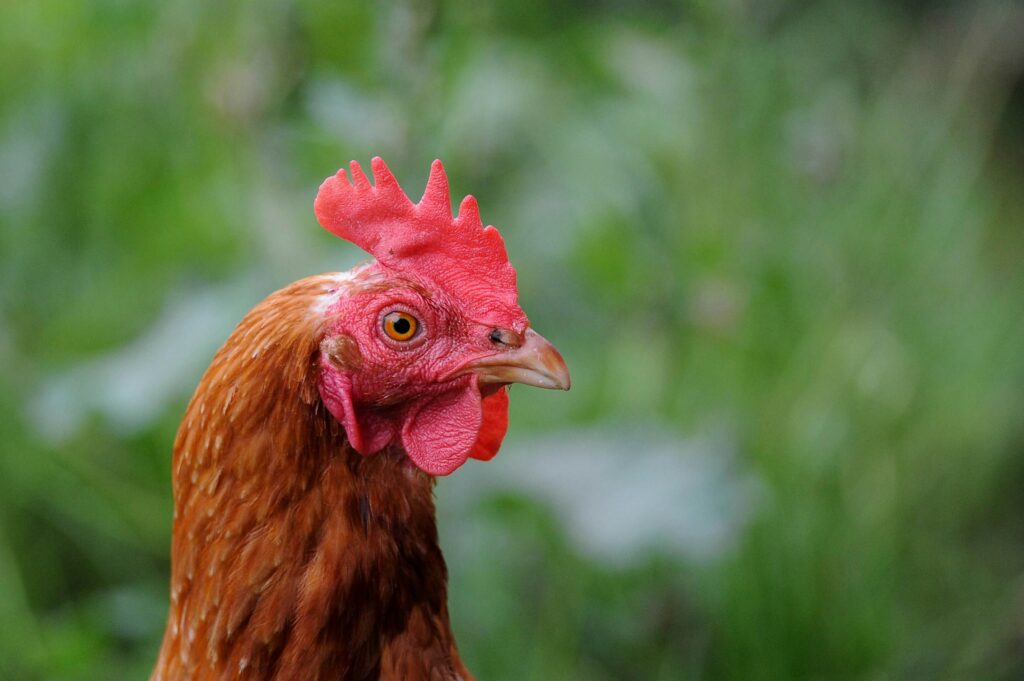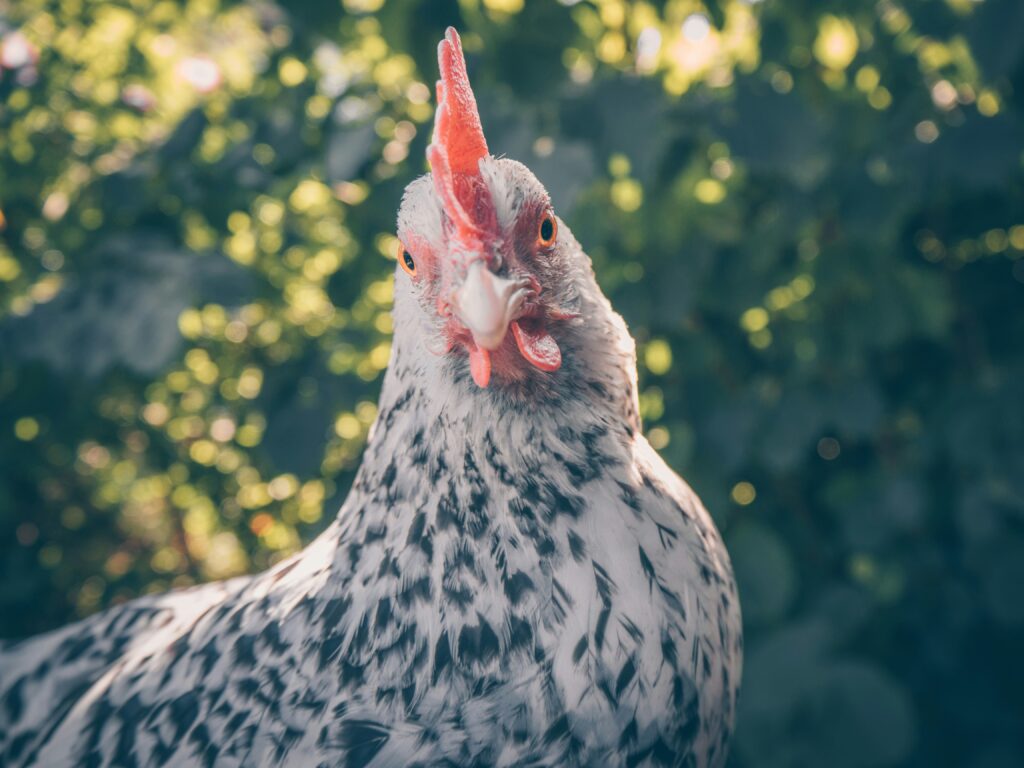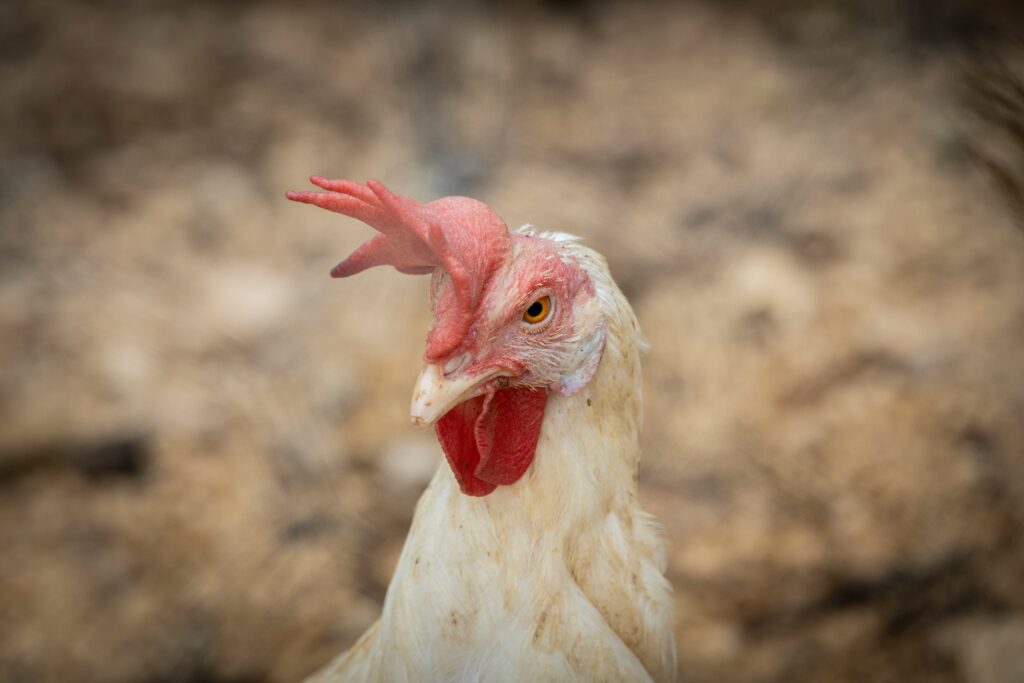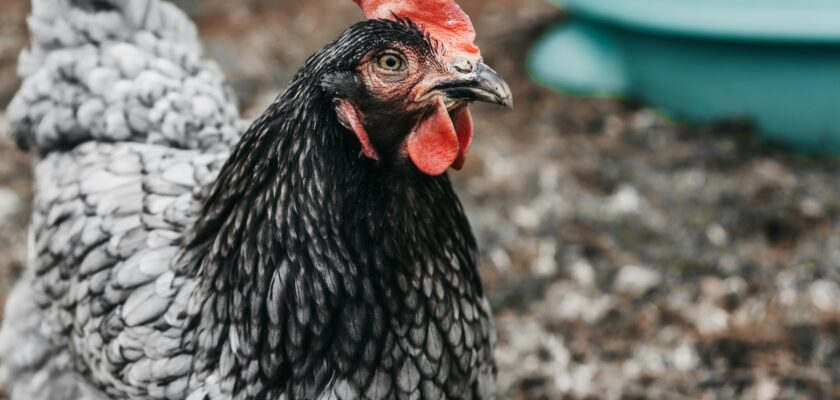Introduction to Wry Neck
Wry neck in chickens, also known as torticollis or crook neck, is a neurological condition that causes birds to hold their heads at unnatural angles—twisting, tilting, or even turning upside down. This disorder can affect chickens of all ages but is particularly common in chicks and young birds.
While distressing to witness, wry neck is not always fatal and often treatable when caught early. Understanding what causes this condition and how to manage it is crucial for poultry keepers.

Photo by Clark Young on Unsplash
Common Causes of Wry Neck in Chickens
Vitamin Deficiency (Especially Vitamin E & Selenium)
The most common cause of wry neck in chickens is a deficiency in vitamin E and selenium. These nutrients are essential for neurological function, and a lack of them can lead to muscular control issues.
- Chicks raised on poor-quality feed are most vulnerable.
- Selenium helps the body absorb vitamin E, making both nutrients critical.
Head or Neck Injury
A blow to the head or rough handling can lead to nerve damage in the brainstem or neck area. This trauma disrupts motor function and balance, triggering wry neck.
Genetic Predisposition
Some breeds or family lines may be genetically prone to neurological disorders. If multiple birds from the same clutch show symptoms, consider this possibility.
Neurological Issues and Marek’s Disease
Marek’s Disease, a viral infection, can cause neurological symptoms including wry neck. While vaccination helps, infected birds may still develop symptoms under stress.
Early Signs and Symptoms of Wry Neck
Recognizing the early signs can make a significant difference in treatment success.
- Tilting head to one side
- Walking in circles
- Loss of balance or disorientation
- Inability to eat or drink without assistance
- Twisting neck upside down (severe cases)

Photo by Steven Groeneveld on Unsplash
Diagnosing Wry Neck in Poultry
There’s no single test to diagnose wry neck, but you can assess based on behavior and history.
Steps to diagnose:
- Review feed for nutrient content.
- Check for signs of injury or trauma.
- Isolate the bird to prevent stress from pecking.
- Consult an avian vet if symptoms persist.
Is Wry Neck Contagious? Understanding the Risks
Wry neck itself isn’t contagious, but the underlying cause might be. For instance:
- Nutritional deficiency is not infectious.
- Marek’s Disease, however, is highly contagious.
It’s wise to isolate affected birds until a cause is confirmed.
Step-by-Step Treatment Options
Nutritional Therapy
- Vitamin E: 400 IU per day (adjust for size)
- Selenium: 0.3 mg daily (usually via wheat germ or egg yolk)
- B-Complex Vitamins can also support nerve regeneration
Feed soft foods like scrambled eggs or vitamin-fortified chick starter.
Supportive Care and Physical Therapy
- Provide a safe, padded area to prevent injury.
- Use towels or slings to support the neck during rest.
- Assist with feeding and watering as needed.
Using Supplements: Dosage & Best Practices
Always follow avian-specific dosing guidelines. Avoid overdosing, especially selenium, which is toxic in high amounts.
Example supplement:Nutri-Drench Poultry– includes vitamins and electrolytes.
When to Involve a Veterinarian
Call a vet if:
- Symptoms worsen after 3–5 days of treatment
- Multiple birds develop symptoms
- There’s suspicion of Marek’s or another infectious disease

Photo by Moon Bhuyan
Preventing Wry Neck in Chickens
Nutritional Planning from Hatch to Hen
- Use high-quality chick starter with proper vitamin levels.
- Rotate feed stock to avoid expired nutrients.
- Supplement during stressful events (molting, transport, etc.)
Safe Coop Design and Injury Prevention
- Avoid sharp edges or objects at head height.
- Monitor flock behavior—bullying can cause pecking injuries.
Can Chickens Recover from Wry Neck? Recovery Timelines
Recovery varies depending on severity and cause:
| Severity | Recovery Time |
| Mild (nutrition-based) | 3–7 days |
| Moderate | 2–3 weeks |
| Severe (neurological) | May take months or remain permanent |
Consistent care increases the chances of full recovery.
Long-Term Management and Quality of Life
Some birds never fully recover but can still lead happy lives with modifications:
- Lower roosts
- Assisted feeding setups
- Protected enclosures
Consider flock dynamics—other birds may bully or outcompete the affected chicken.
FAQs About Wry Neck in Chickens
Can wry neck kill a chicken?
Yes, especially if the bird cannot eat or drink. However, timely treatment significantly improves survival.
How fast does wry neck progress?
It can appear suddenly or gradually worsen over days.
Is wry neck permanent?
Not always. Many birds recover with supplements and care.
Can adult chickens get wry neck?
Yes, though it’s more common in chicks.
Can I use human vitamins for chickens?
Some, like natural vitamin E capsules, are safe. Always research dosages.
Should I cull a chicken with wry neck?
Only if quality of life is poor or the condition is untreatable. Many birds can recover.

Photo by Alfonso Betancourt on Unsplash
Conclusion: Taking Proactive Steps for Poultry Health
Wry neck in chickens may look alarming, but with early intervention, proper nutrition, and compassionate care, many birds recover and return to normal life. Staying proactive with feed quality, coop safety, and routine observation goes a long way in preventing this condition altogether.
If you’re unsure, don’t hesitate to consult with an avian vet or poultry expert. Your chicken’s quirky tilt might just be a temporary setback on the road to a healthy, happy life.
